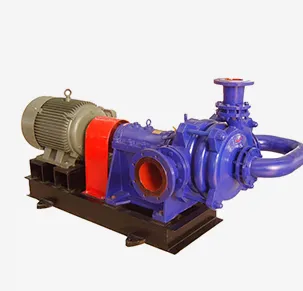Javanese
- Afrikaans
- Albanian
- Amharic
- Arabic
- Armenian
- Azerbaijani
- Basque
- Belarusian
- Bengali
- Bosnian
- Bulgarian
- Catalan
- Cebuano
- Corsican
- Croatian
- Czech
- Danish
- Dutch
- English
- Esperanto
- Estonian
- Finnish
- French
- Frisian
- Galician
- Georgian
- German
- Greek
- Gujarati
- Haitian Creole
- hausa
- hawaiian
- Hebrew
- Hindi
- Miao
- Hungarian
- Icelandic
- igbo
- Indonesian
- irish
- Italian
- Japanese
- Javanese
- Kannada
- kazakh
- Khmer
- Rwandese
- Korean
- Kurdish
- Kyrgyz
- Lao
- Latin
- Latvian
- Lithuanian
- Luxembourgish
- Macedonian
- Malgashi
- Malay
- Malayalam
- Maltese
- Maori
- Marathi
- Mongolian
- Myanmar
- Nepali
- Norwegian
- Norwegian
- Occitan
- Pashto
- Persian
- Polish
- Portuguese
- Punjabi
- Romanian
- Russian
- Samoan
- Scottish Gaelic
- Serbian
- Sesotho
- Shona
- Sindhi
- Sinhala
- Slovak
- Slovenian
- Somali
- Spanish
- Sundanese
- Swahili
- Swedish
- Tagalog
- Tajik
- Tamil
- Tatar
- Telugu
- Thai
- Turkish
- Turkmen
- Ukrainian
- Urdu
- Uighur
- Uzbek
- Vietnamese
- Welsh
- Bantu
- Yiddish
- Yoruba
- Zulu
Telephone: +86 13120555503
Email: frank@cypump.com
Sep . 28, 2024 12:47 Back to list
submersible sewage pump repair
The Importance of Submersible Sewage Pump Repair
Submersible sewage pumps are vital components in wastewater management systems, particularly in residential, commercial, and industrial settings. These pumps are designed to operate underwater, efficiently moving sewage and wastewater to treatment facilities. However, like any mechanical device, submersible sewage pumps can experience wear and tear, leading to the necessity of prompt and effective repair. Understanding the common issues, maintenance practices, and the repair process can ensure these pumps operate optimally and last longer.
Common Issues Leading to Repairs
Submersible sewage pumps are robust but are not immune to various operational challenges. One of the most common issues is clogging. Excessive debris, such as plastic items, rags, and other non-biodegradable materials, can obstruct the impeller, significantly reducing the pump's efficiency. This often results in overheating and eventual failure if not addressed promptly.
Another frequent problem is electrical failure. Submersible pumps operate using electric motors which are prone to issues such as burnt-out windings or damaged connections due to prolonged exposure to moisture. Furthermore, improper installation can lead to problems like misalignment, which puts excessive strain on the pump's components.
Importance of Regular Maintenance
Preventive maintenance is crucial in extending the lifespan and efficiency of submersible sewage pumps. Regular inspections should include checking the electrical components, ensuring all connections are intact and free from moisture damage. Additionally, it is essential to regularly clear any debris from the pump to prevent clogs and reduce potential downtime.
submersible sewage pump repair

Lubrication of moving parts and checking seals for integrity are also significant aspects of maintenance
. By establishing a routine maintenance schedule, operators can identify and rectify minor issues before they escalate into costly repairs.The Repair Process
When a submersible sewage pump does require repair, it is essential to follow a systematic process. First, the pump must be safely removed from its installation. This involves disconnecting power sources and ensuring that any residual fluids are properly managed to prevent spills.
Once removed, the pump should be thoroughly cleaned to remove any buildup of materials. Technicians will then conduct a diagnostic examination to identify the problem areas. Common repairs may include replacing damaged impellers, seals, or electronic components.
Testing the pump post-repair is crucial to ensure that it functions correctly and meets required operational standards. Reinstallation should be conducted with care, ensuring that the power source is securely reconnected and that the pump is properly positioned.
Conclusion
In conclusion, submersible sewage pump repair is a critical aspect of ensuring effective wastewater management. By understanding common issues, prioritizing maintenance, and following a structured repair process, organizations can enhance the reliability and efficiency of these essential machines. Ultimately, investing in the proper care and repair of submersible sewage pumps not only saves money but also contributes to a cleaner and safer environment. Regular attention to these pumps is not just about prevention; it is about maintaining a crucial infrastructure necessary for modern living.
-
ISG Series Vertical Pipeline Pump - Chi Yuan Pumps Co., LTD.|High Efficiency, Low Noise, Durable
NewsAug.02,2025
-
ISG Series Vertical Pipeline Pump - Chi Yuan Pumps | High Efficiency, Low Noise
NewsAug.02,2025
-
ISG Series Vertical Pipeline Pump- Chi Yuan Pumps Co., LTD.|High Efficiency&Compact Design
NewsAug.02,2025
-
Heavy-Duty Mining Sludge Pumps - Wear-Resistant Slurry Handling
NewsAug.02,2025
-
Horizontal Split Case Pump with GPT-4 Turbo | High Efficiency
NewsAug.01,2025
-
ISG Series Pipeline Pump - Chi Yuan Pumps | High Efficiency, Durable Design
NewsAug.01,2025










